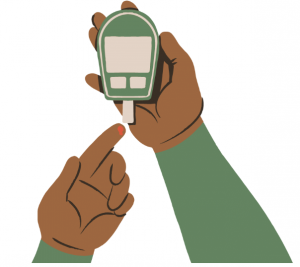If you’re one of the millions of Americans suffering from leg pain, you may be looking for ways to find relief in the new year. While there are many possible causes of leg pain, one common culprit is Peripheral Arterial Disease (PAD). PAD occurs when plaque builds up in the arteries, restricting blood flow to the legs. Luckily, there are a few simple resolutions you can make to help manage your PAD and leg pain.
- Keep your blood pressure under control. High blood pressure is a common cause of PAD, so keeping your blood pressure in check is an important step in managing the condition. Work with your doctor to set goals for maintaining a healthy blood pressure, and stick to those goals throughout the year.
- Keep your blood sugar levels under control. Diabetes is another common cause of PAD, so if you have diabetes, it’s important to keep your blood sugar levels within a healthy range. Work with your doctor or diabetes educator to set target blood glucose levels, and monitor your levels regularly at home.

- Keep your cholesterol under control. High cholesterol is a risk factor for developing PAD, so keeping your cholesterol in check can help reduce your risk of the condition or help manage it if you already have it. Talk to your doctor about what your ideal cholesterol levels should be, and make lifestyle changes or take medication as needed to reach those goals.
- Stop smoking. Smoking is a major risk factor for developing PAD, so quitting smoking is one of the best things you can do for your health if you have leg pain caused by PAD. Talk to your doctor about programs and medications that can help you quit smoking for good this year.

Making just a few simple lifestyle changes can go a long way toward managing leg pain caused by peripheral arterial disease. If you’re looking for ways to find relief in the new year, resolving to keep your blood pressure, blood sugar levels, and cholesterol under control—and quitting smoking—are all great places to start.
When it’s time to Call the Doctor
In addition to lifestyle changes, it may be time to call the doctor, especially if you are experiencing symptoms of Peripheral Arterial Disease (PAD).
Symptoms include:
- Coldness in the lower leg or foot, especially when compared with the other side
- Leg numbness or weakness
- No pulse or a weak pulse in the legs or feet
- Painful cramping in one or both of the hips, thighs or calf muscles after certain activities, such as walking or climbing stairsShiny skin on the legs
- Skin changes on the leg
- Slower growth of the toenails
- Sores on the toes, feet or legs that won’t heal
- Pain when using the arms, such as aching and cramping when knitting, writing or doing other manual tasks
- Erectile dysfunction
- Hair loss or slower hair growth on the legs
If you are experiencing any of the above symptoms, it’s time to call us, as this may indicate that you have a more serious issue. We will perform a comprehensive exam, which includes asking you about your symptoms, current lifestyle, and risk factors. After your evaluation, we may recommend additional testing, like an x-ray or an ultrasound of the affected leg and foot. Finally, depending on the cause and complexity of your pain, we may prescribe lifestyle changes, medications, or a procedure.
Our patient care does not stop after you walk out of our facilities. We schedule follow-up appointments that help us to evaluate the results and recovery. Our friendly physicians and staff members will also provide you with answers to your concerns or questions after every appointment, diagnostic test, and medical procedure. We strive to offer all our patients the best possible results, allowing them to get back on their feet quickly.
References
Gey, D., Lesho, E., & Manngold, J. (2004, February 4). Management of Peripheral Arterial Disease. American Family Physician. Retrieved December 1, 2022, from https://www.aafp.org/pubs/afp/issues/2004/0201/p525.html
The content on this blog does not substitute as medical advice and it should not be used to make a medical diagnosis or to replace your healthcare provider’s clinical evaluation.